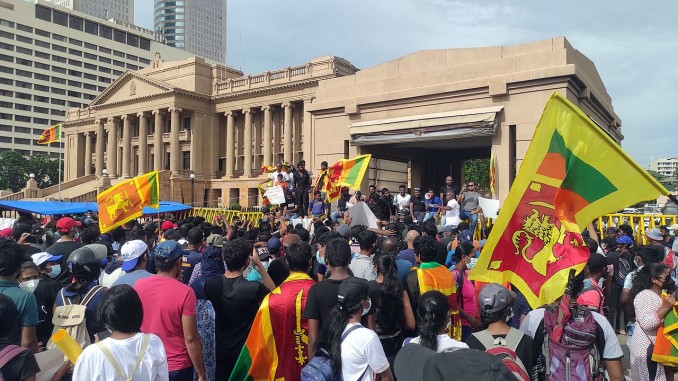
On April 28, millions of Sri Lankan workers held a general strike to demand the resignation of President Gotabaya Rajapaksa and his government. This has been the first general strike in Sri Lanka since 1980, and businesses, schools, transportation, and banks were all shut down by the one-day work stoppage.
The strike came after weeks of protests in Sri Lanka against the president and the government. Sri Lankans are angry with the recent increases in the prices of imported goods, including food, fuel, and medicine. The Sri Lankan government is running out of its reserves of foreign currency, and has been unable to purchase sufficient amounts of these imports, leading to shortages.
Protesters blame President Rajapaksa and the government – led by the president’s brother, Prime Minister Mahinda Rajapaksa, who was also a previous president – for mismanaging the Sri Lankan economy. The Rajapaksas have held power in Sri Lanka for nearly 20 years.
Trade unions threatened another, longer, strike if their demands for the president’s and government’s resignations were not met, and on May 6, another general strike involving millions of workers took place, once again bringing the entire country to a standstill. It is still too soon to tell whether the strikers’ demands will be met, or if the strikes and protests will have a meaningful impact on workers’ living conditions. However, the workers are right to act, and to use their power to force the removal of politicians who are part of the problem.

